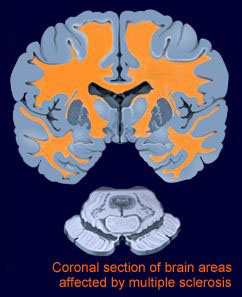 In a word, “frustration.” People with multiple sclerosis (MS) use CAM because conventional treatments have many side effects and they are dissatisfied with the results.
In a word, “frustration.” People with multiple sclerosis (MS) use CAM because conventional treatments have many side effects and they are dissatisfied with the results.
They also feel they have too little time with their physician — more than half of patients with MS in Germany get just 15 minutes for the first meeting.
Here’s what we know.
First, the details.
- A 53-item survey was mailed to the 1573 adult members of the German Multiple Sclerosis Society, chapter of Baden-Wuerttemberg.
And, the results.
- Compared to conventional medicine, significantly more patients had a positive attitude toward CAM (44% vs 38%)
- 70% reporting using at least one CAM during their lives.
- Diet modification (41%)
- Omega-3 fatty acids (37%)
- Removal of amalgam fillings (28%)
- Vitamins E (28%), B (36%), and C (28%)
- Homeopathy (26%)
- Selenium (24%)
- 69% were satisfied with the effects of CAM.
- The use of CAM was significantly more common among those who were religious, functionally independent, female, white-collar workers, and those with higher education.
- CAM-related side effects were reported by 9% vs 59% for conventional treatments — a significant difference.
The bottom line?
Imagine the anxiety and frustration of a person who has experienced one or more of the following: changes in sensation in the arms, legs or face; vision loss or double vision; weakness; and maybe unsteadiness when walking.
They’ve been given a new diagnosis of MS, and then get just 15 minutes with the person they’re entrusting their care to. For these people, the message is you’re alone, prepare to fend for yourself.
7/18/08 18:49 JR